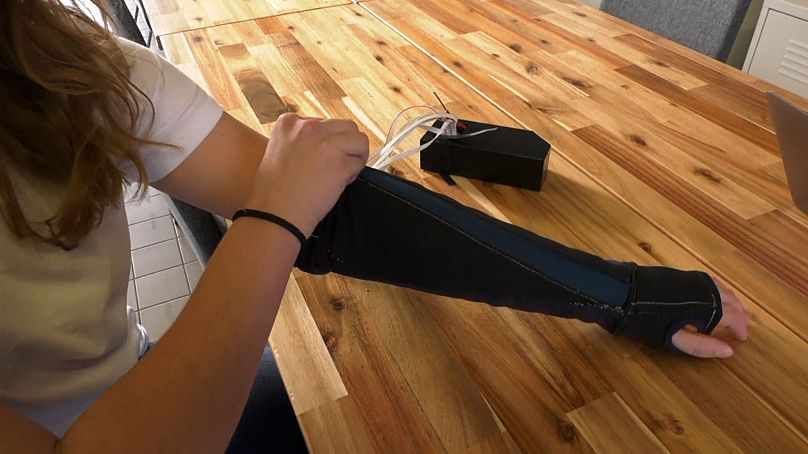The device works by converting text into sound files that are then expressed in the sleeve via speakers.
Through these simple vibrations, it's possible to understand almost any foreign language, according to a team of students at Eindhoven University of Technology in the Netherlands.
They have developed a "vibratory language" based on 39 different English language sounds.
A computer algorithm converts written English text into sound files, which are then turned into vibrations. Each sound has its own vibration.
They're then expressed as vibrations via speakers in this "intelligent sleeve". The sequence of vibrations spells out words and sentences.
"Initially, we were inspired by the superhero movies, of course, so we wanted to give people super abilities as well. And we wanted to do it in form of freedom of experience. So, we want to give people new senses," explained Mariia Turchina, a computer science student at the university and the project's founder.
"Language is an example, but in the end, we want to have a universal framework where you can experience anything in the world, any information we can translate into patterns".
The research team says it takes about a month of practice for an hour every two days to learn the vibration language.
Team member and industrial engineering student, Lisa Overdevest, said she managed to learn the vibration language in that time.
"So, a word is decomposed in little sounds," she explained.
"For example, phone, if you write it, it's P, H, O, N, E, of course. But when we pronounce it, it's F double O, N. and those are the little parts we use for vibration patterns".
Currently, users can feel and understand written language, but according to the student team - named HART - it should soon be possible to convert spoken language directly into vibrations too.
For this, artificial intelligence will have to be integrated into the design.
That's what HART is now working on. The team also wants to build the vibration equipment directly into clothing.
"The sleeve over here actually has 24 little speakers, and if you know speakers, when they produce sound, they're going to buzz a little bit, and that's what we have over here," said Overdevest.
"There are 24 of them. I have two rows of six on top, and I have two rows of six at the bottom".
If the team succeeds in converting spoken language into vibrations, it's thought the device could be useful for people with hearing difficulties.
They could then just converse with someone by feeling, without having the conversation partner in sight, which is the case with lip-reading or sign language.
From February 2022 onwards, the team will be working with students that have hearing disabilities to further develop the sleeve.
For more on this story, watch the video in the media player above.












